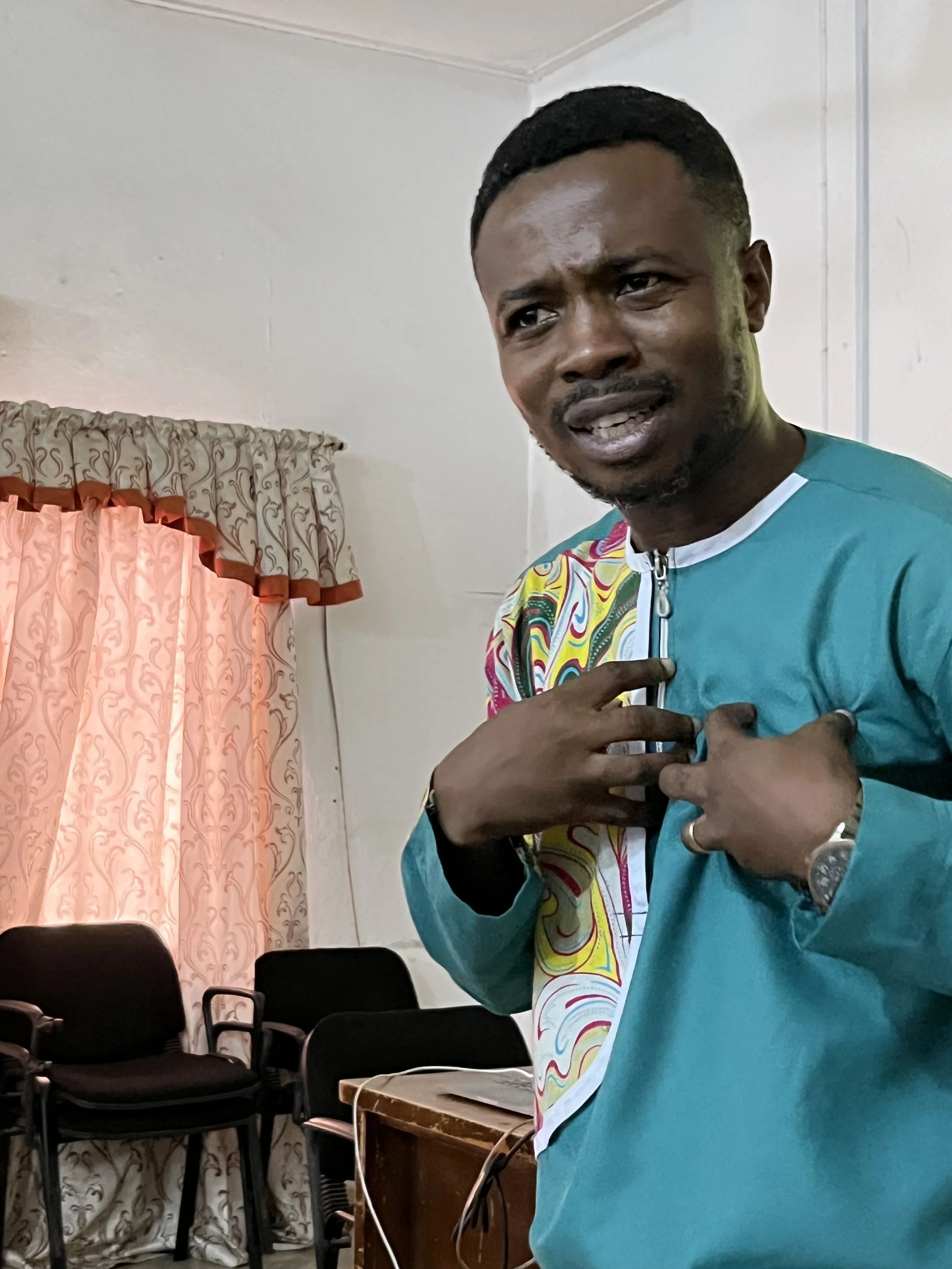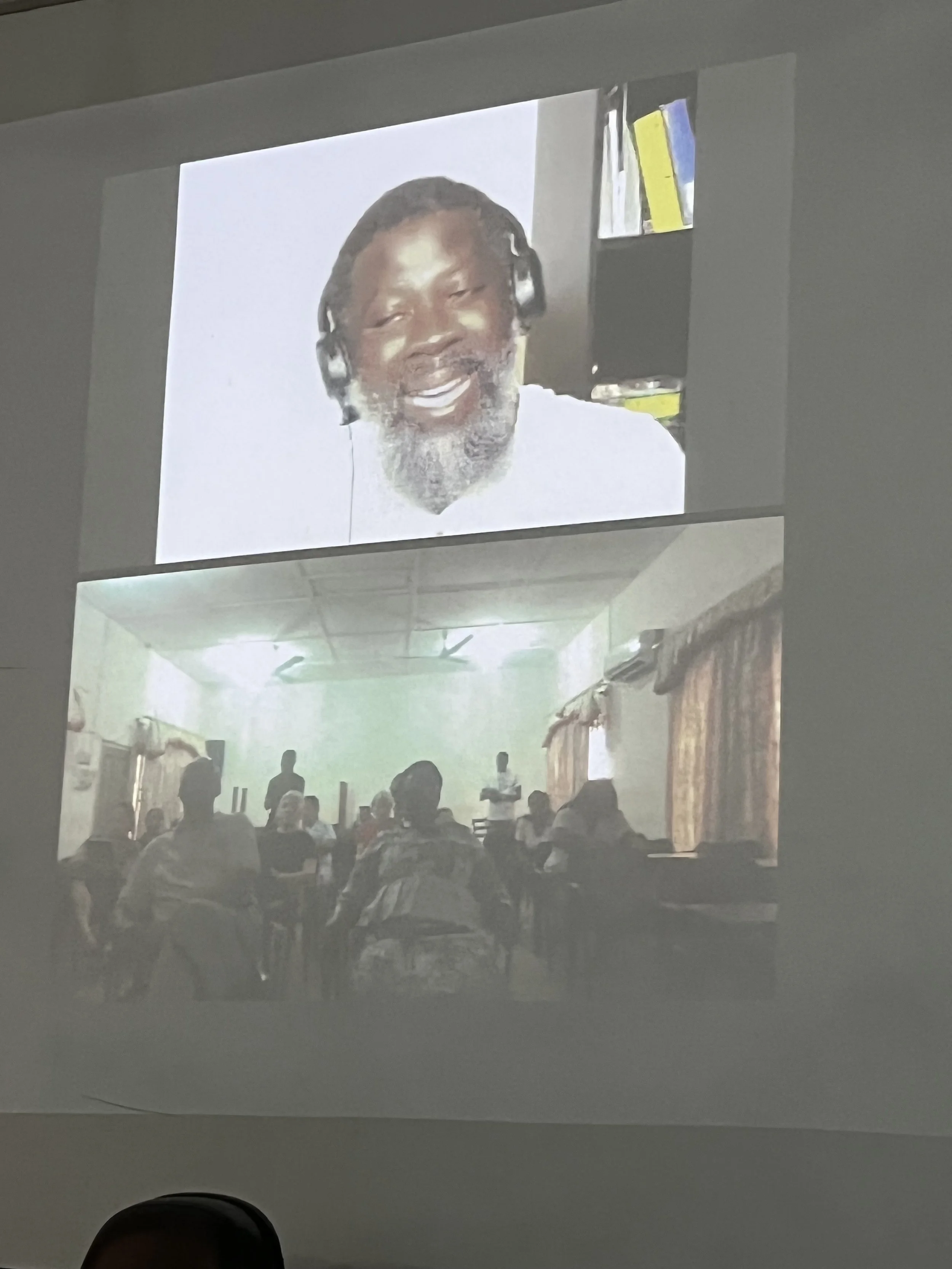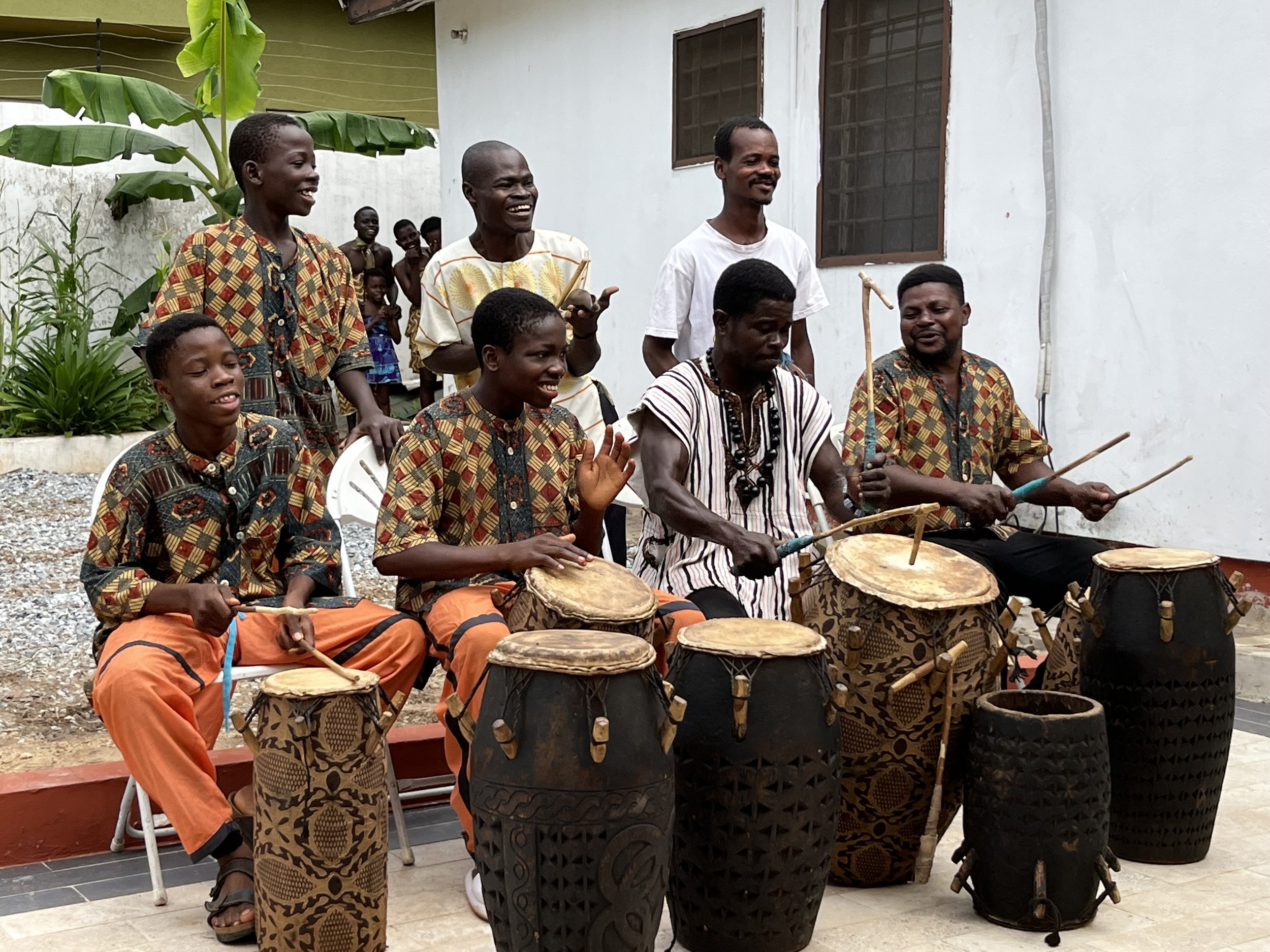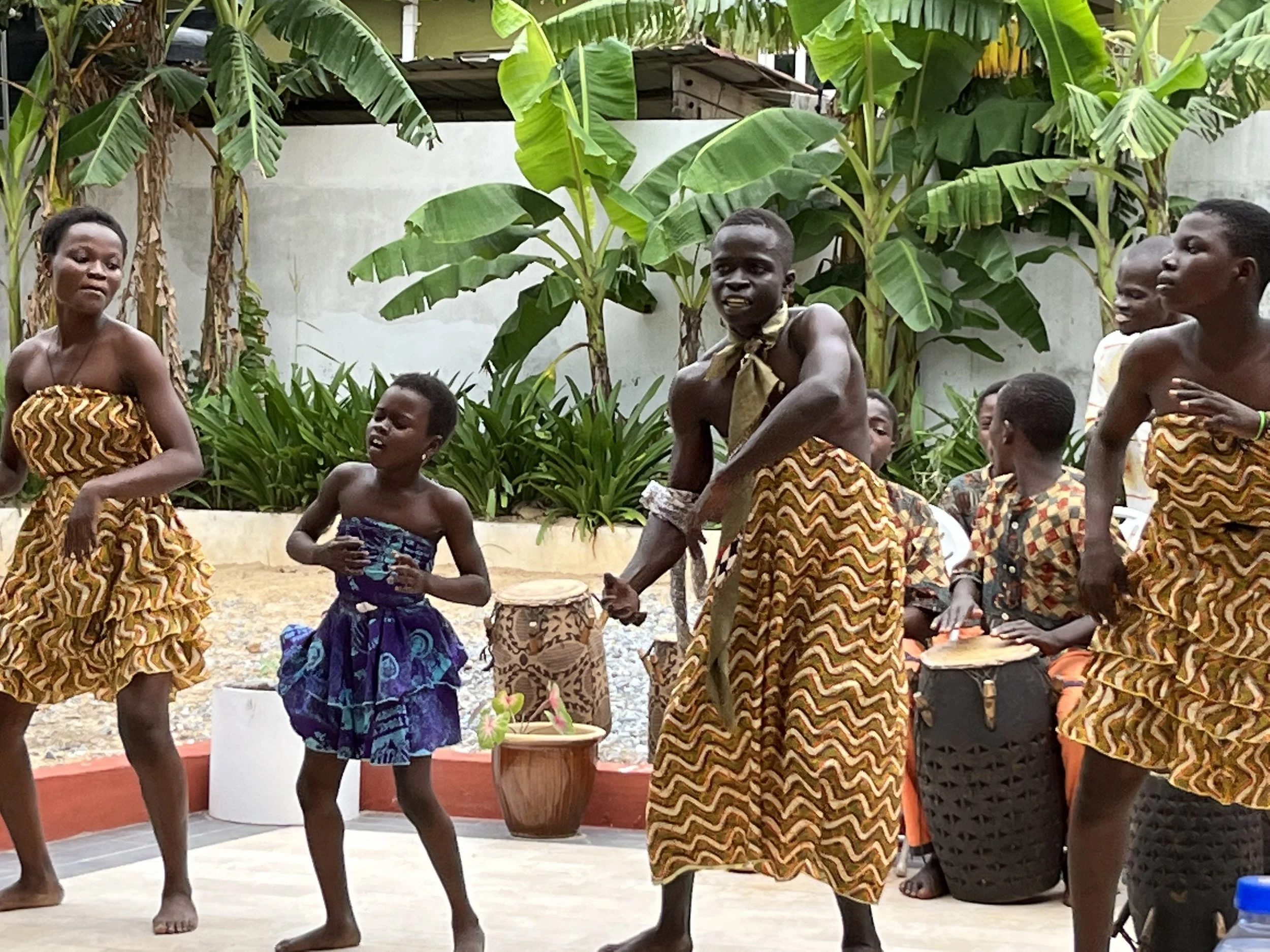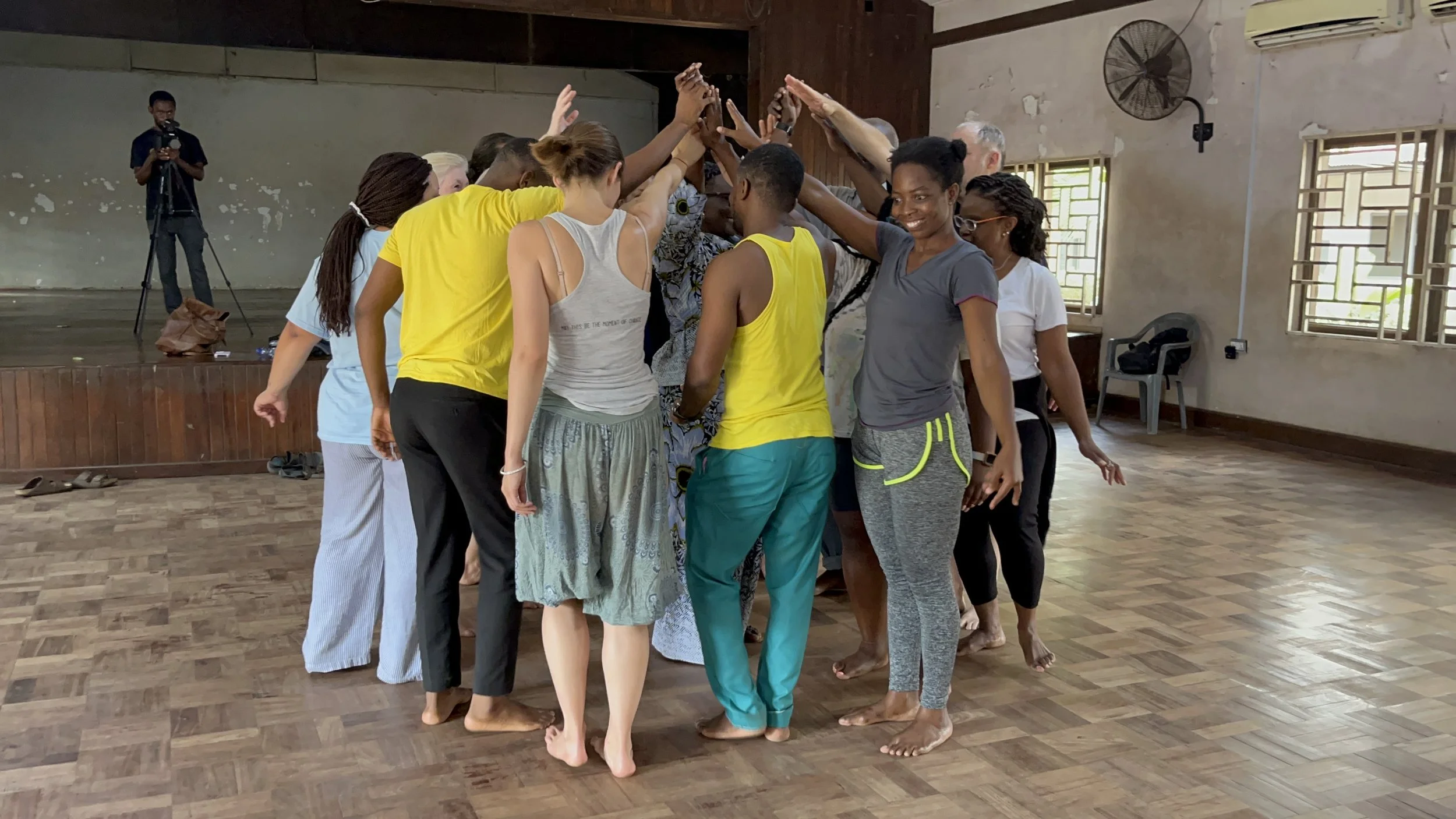I am Krista Galleberg, a fifth grade teacher at a project-based learning school in San Diego, California. I am excited and grateful to be part of the Witness Tree Institute of Ghana cohort. Thanks you for reading!
Two of the most important themes that have run through this trip have been dance and music. The questions we focused on during the past several days were, “Why are music and dance so important to the Ghanaian?” and a related question, “What is Ghanaian identity?”
On Saturday, we received a private lecture about Ghanaian identity and the importance of Ghanaian dance and music from Dr. Sylvanus Kuwor at the University of Ghana, Accra (Legon campus). On Sunday we returned to the University of Ghana’s performing arts department for another private lecture on the anthropology of dance, and take a private dance class from Dr. Kofi Antonio and his colleague Mr. Awuah.
Dr Kwashie Kuwor
Dr. Kuwor was our first lecturer and the first dance professor to welcome us to Ghana’s largest and oldest university. Dr. Kuwor is a master drummer; music, dance and theater practitioner and teacher; and scholar of traditional Ghanaian dance and music. He earned several degrees in dance practice and theory, culminating in his PhD from the University of Roehampton in London in Dance Anthropology. After working and studying in London for more than a decade, Dr. Kuwor returned to the University of Ghana to be the head of the Department of Dance.
Dr Kofi Anthonio
Likewise, Dr. Kofi Antonio also has earned several degrees in dance theory and practice, culminating in a PhD. degree from the University of Ghana, Accra, where he studied the indigenous wisdom and histories that are encoded in traditional Ghanaian dances. Pre-colonial, or traditional Ghana, was a collection of ethnic groups that were not literary; these groups did not use writing and reading to record their history, politics, or forms of knowledge. Rather, knowledge was recorded and enshrined in dance, music and stories. Dr. Kofi’s research involved translating the knowledge found in these village dances to the university context.
Mr. Awuah Zooming to Discuss Ghanaian Identity and Dance
Ghana has sixteen separate regions, over thirty indigenous languages, and more than thirty million people. So what, according to Drs. Kuwor and Antonio, is “the Ghanaian”? As Dr. Antonio explained, Ghanaian identity is a “mishmash of unique ethnic characteristics.” Despite many cultural differences among the groups and cultures found in Ghana, there are some similarities. Some of the most important and fundamental similarities of Ghanaian identity are enshrined in music and dance.
In Ghana (and in West African more generally) music and dance cannot be separated: music is the rhythm of the body, and dance is the body responding to music. Indeed, Dr. Kuwor shared that music and dance form the four major elements of African life: sound (the cry of a baby), rhythm (progression of sound), vibration (the source of empowerment, or the impetus to move), and movement (the body’s response to the first three elements). Stillness, in this tradition, connotes death: if someone does not dance to music, that person is dead. And I would add that if the descendants of master drummers and dancers do not understand the cues of the music, that is a form of cultural death.
In short, as Dr. Kuwor put it, “to live is music and dance.”
Dr. Kuwor has developed a theory of aesthetics of African dance to explain its importance and the role it plays in maintaining and preserving traditional Ghanaian society. This theory relates to theories of holism: in order to understand the importance of dance and music to the Ghanaian, one must understand the facets of dance in all its forms: body, visual forms, multi-sensory modalities, and music. Every aspect of a traditional dance is important just as every word is important in an ancient text: the color of the costumes, the direction of the dancers, the space where the dance is performed, the body movements, the musical rhythms, etc. all work together to shape the message.
There are four main types of traditional dances: royal dances, war dances, cult dances (to commune with the spiritual realm), and social dances. Traditionally, only certain people can perform certain dances. However, in order to preserve these dances in the face of colonization and urbanization, dances are now collected and performed at the university and by others who are not members of the traditional or ethnic groups that created these dances.
For example, there are certain dances that are traditionally only performed at funerals. Depending on the color of the costumes, that funeral may honor an extremely tragic or untimely death (red costumes), a moderately untimely death (black costumes), or a natural death following a long life (white costumes).
Kings and queen-mothers are the custodians of certain traditional dances. The origin of the “Wakanda” gesture from Marvel’s Black Panther movie (arms crossed over chest) was taken from a war dance. In the original dance phrase, the movements encoded the message: from the east to the west, all power rests on me. The shortened “Wakanda” gesture represents the portion of that movement phrase that says, “on me.”
The experience of the dance class was both fun and enriching, especially in the context of all that we had learned about the role and function of dance in West African societies. Kofi (Dr. Antonio) was an amazing dance teacher who made the experience silly, energizing, and inclusive. We learned and performed a part of a traditional dance and song for about an hour and a half. We learned it as a group then took turns performing for one another, complete with impromptu group names and false biographies of our respective dance troupes.
There is so much more I would like to share about this fascinating and hands-on experience learning about Ghanaian dance and identity, such as the role dance plays in the new curriculum for a post-colonial Ghana, and the ways in which the Performing Arts department has engaged in mentorship from the university to the street. If you are interested in learning more about these themes, I encourage you to check out Dr. Kuwor and Dr. Antonio’s research and biography pages on the University of Ghana’s website. In the meantime, thank you for reading this installation of the WTIG blog! Stay tuned for more stories, adventures, and small tidbits of life from the WTIG experience in Ghana.
By Krista Galleberg, a fifth grade teacher at a project-based learning school in San Diego, California.

